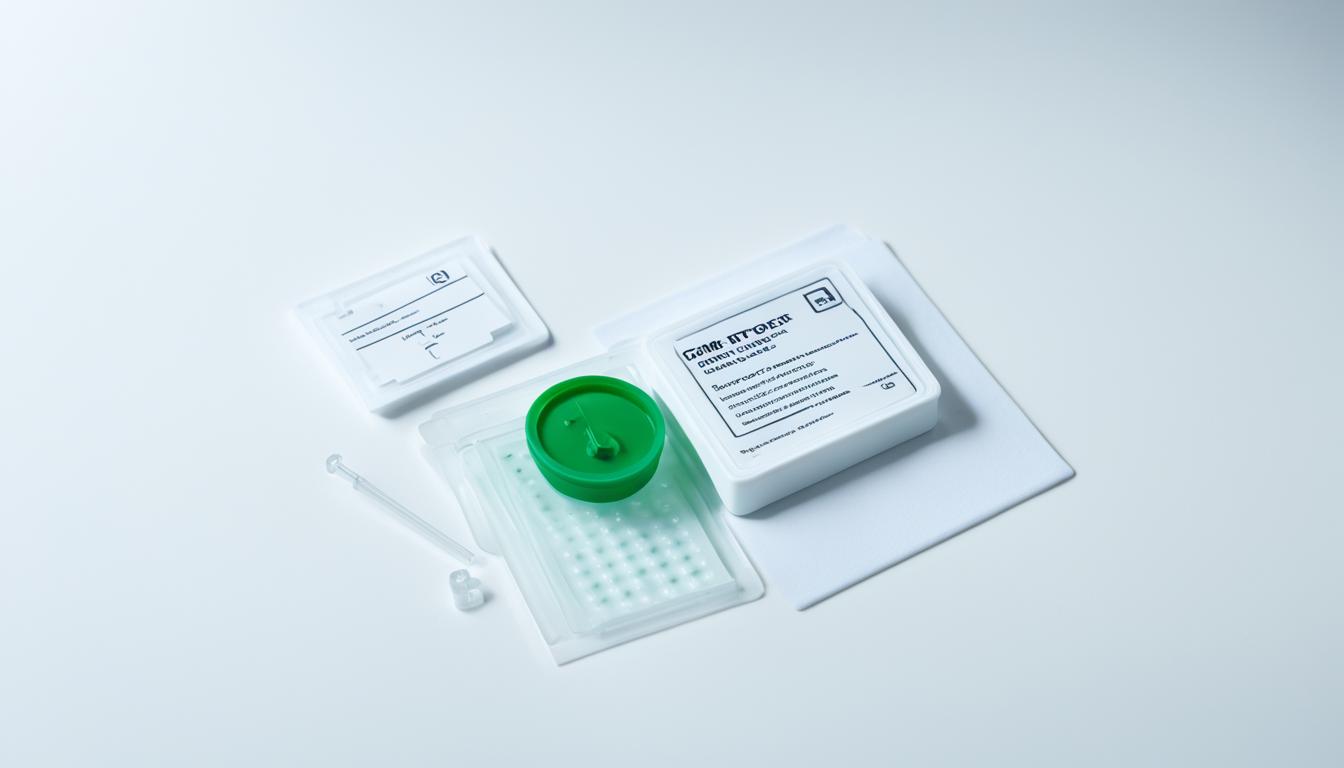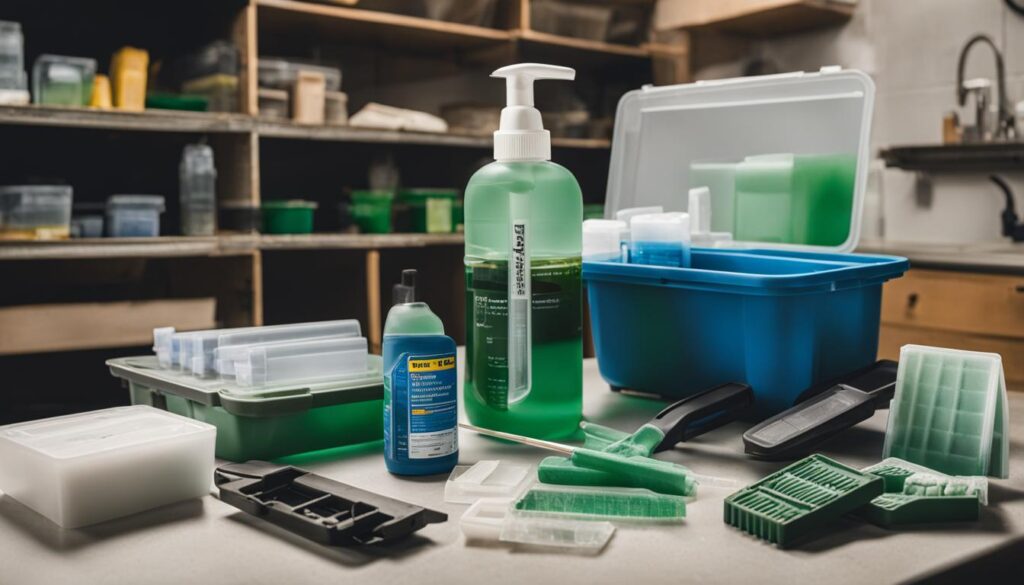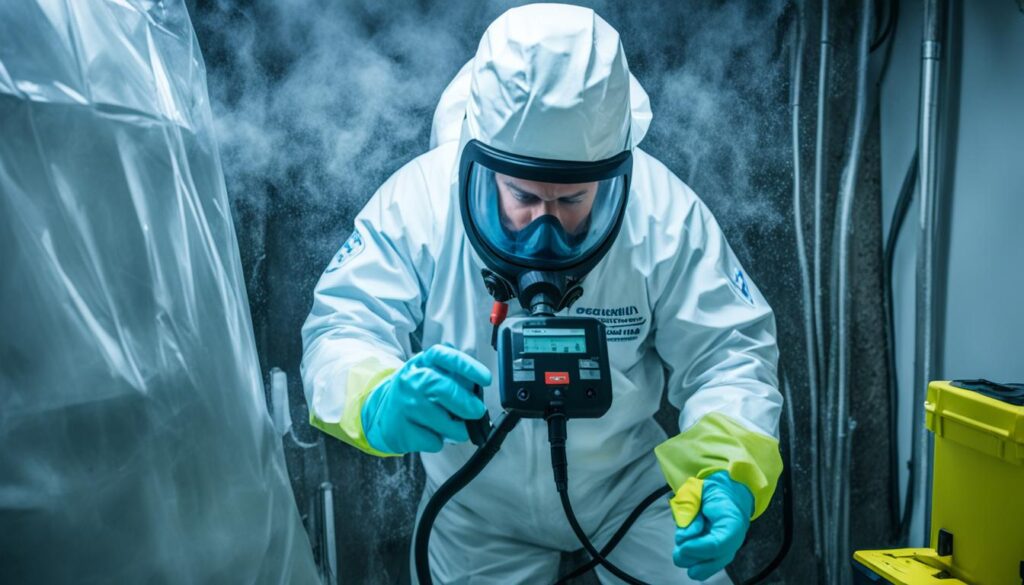
Home Mold Test Kits: Quick & Accurate Detection
Discover the power of home mold test kits to quickly and accurately detect mold in your living space. With these DIY testing kits, you can take control of your indoor air quality and ensure a healthy environment for you and your family.
Mold is a common issue that can develop in any home, causing potential health risks and damaging the structure of your property. It’s crucial to address mold problems promptly to prevent further damage and safeguard your well-being. Home mold test kits offer a convenient and efficient solution for identifying the presence of mold in your living space.
By utilizing a mold testing kit, you can easily assess the condition of your home and take necessary steps to mitigate the problem. These kits provide simple and effective methods for conducting a mold inspection, allowing you to identify areas where mold growth may be occurring. With clear instructions and reliable results, DIY mold testing kits empower you to make informed decisions about further action.
Key Takeaways:
- Home mold test kits offer a quick and accurate way to detect mold in your living space
- Mold can impact indoor air quality and pose health risks
- DIY mold testing kits provide simple and effective methods for mold inspection
- Interpreting the results of your mold tests allows you to understand the severity of the issue
- Seek professional mold testing services if DIY tests indicate significant mold presence or hidden mold is suspected
Understanding Mold and its Impact on Indoor Air Quality
In this section, we will delve into the characteristics of mold and its potential impact on indoor air quality. We’ll explain how mold can commonly be found in homes and the importance of conducting regular tests to ensure a healthy living environment. We will also discuss the various factors that can contribute to mold growth and the potential health risks associated with exposure to mold.
When it comes to maintaining a safe and healthy home, mold detection at home plays a crucial role. Mold is a type of fungus that thrives in warm, damp environments, making homes an ideal breeding ground. It can easily grow on various surfaces such as walls, ceilings, carpet, and even furniture. Mold spores are microscopic and can become airborne, leading to potential respiratory issues when inhaled.
One of the primary reasons why mold detection at home is essential is its impact on indoor air quality. When mold grows and releases spores, these particles can become suspended in the air, leading to poor air quality. Breathing in mold spores can cause allergic reactions, asthma attacks, and other respiratory problems, especially for individuals with pre-existing conditions or weakened immune systems.
Regular indoor air quality testing is vital to assess the presence of mold in your home. By conducting these tests, you can identify areas with higher mold concentration and take appropriate measures to address the issue. It is especially crucial to test areas where mold is commonly found, such as bathrooms, basements, kitchens, and areas with water leaks or high humidity levels.
Mold growth is often indicative of underlying moisture problems in the home. Factors that contribute to mold growth include high humidity, water leaks, poor ventilation, and inadequate insulation. By detecting mold early on, you can identify the root causes and take necessary actions to prevent further growth and improve indoor air quality.
The Potential Health Risks of Mold Exposure
The presence of mold in your home can pose significant health risks. Mold exposure can lead to various health issues, particularly for individuals who are sensitive or allergic to mold. Common symptoms of mold exposure include:
- Respiratory problems such as coughing, wheezing, and shortness of breath
- Allergic reactions such as sneezing, runny nose, and itchy eyes
- Skin irritation and rashes
- Headaches and migraines
- Fatigue and difficulty concentrating
It’s important to note that the severity of symptoms can vary depending on the individual’s sensitivity and the extent of mold exposure. If you or your family members experience persistent health issues that seem to worsen when you’re at home, it’s essential to consider the possibility of mold as a potential cause.
By understanding the impact of mold on indoor air quality and the potential health risks associated with exposure, you can prioritize mold detection at home and take the necessary steps to maintain a safe and healthy living environment for you and your loved ones.
DIY Mold Testing Kits: Simple and Effective Methods
In this section, we will guide you through the process of using DIY mold testing kits. Conducting a mold inspection in your home is essential to ensure a safe and healthy living environment for you and your family. With the help of these kits, you can easily assess the presence of mold and take appropriate measures for remediation. Let’s dive into the step-by-step instructions and procedures for conducting a mold inspection.
Step 1: Prepare the Necessary Tools
Before starting the mold inspection, gather all the necessary tools and equipment. These typically include:
- Protective gear such as gloves, goggles, and a mask
- Mold testing kit (available online or at your local hardware store)
- Plastic bags for sample collection
- Flashlight for examining hard-to-reach areas
Step 2: Identify Problem Areas
Next, identify the areas in your home where mold growth is most likely to occur. Common problem areas include damp basements, bathrooms, kitchens, and areas with water leaks or high humidity. Pay close attention to any visible signs of mold, such as discoloration, musty odors, or water stains.
Step 3: Conduct the Mold Inspection
Now, follow these steps to conduct a thorough mold inspection:
- Put on your protective gear before handling any potential mold-infested areas.
- Start inspecting from the top of the room and work your way down.
- Check behind furniture, in closets, and on ceilings, walls, and baseboards.
- Look for visible signs of mold, including spots, discoloration, or fuzzy growth.
- Use your flashlight to examine dark or hidden areas.
- If you encounter mold growth, take a sample using the mold testing kit according to the manufacturer’s instructions.
- Place the sample in a plastic bag for further analysis.
- Continue inspecting all problem areas and collect samples as necessary.
Step 4: Interpret Mold Test Results
After collecting the samples, it’s time to interpret the mold test results. Most DIY mold testing kits come with instructions to help you understand the results accurately. The results will indicate the presence or absence of mold, as well as the type and concentration of mold spores in each sample collected.
Interpreting the mold test results involves comparing the spore counts in your samples to established guidelines and recommended levels. It is crucial to remember that even a small number of mold spores can be problematic for individuals with mold sensitivity or respiratory conditions.
Step 5: Determine the Severity and Take Appropriate Action
Based on the mold test results and the severity of the issue, you can determine the appropriate next steps for remediation. In some cases, if the mold growth is minor and confined to a small area, you may be able to handle the remediation process yourself using DIY methods. However, if the mold growth is extensive or if you suspect hidden mold within your home’s structure, it is advisable to seek professional mold remediation services.
Remember, mold testing and inspection are essential steps in creating a healthy living environment. By following these DIY mold testing procedures and accurately interpreting the results, you can effectively address mold issues and ensure the well-being of your family.

| Mold Test Results Interpretation | Severity Level | Recommended Action |
|---|---|---|
| Low spore counts | Minimal to no mold growth detected | Monitor the area, maintain good ventilation and cleanliness |
| Moderate spore counts | Mild mold growth detected | Implement DIY mold remediation techniques or seek professional assistance if necessary |
| High spore counts | Significant mold growth detected | Engage professional mold remediation services to ensure thorough and safe removal |
Professional Mold Testing Services: When to Seek Help
In some cases, it may be necessary to seek professional mold testing services to ensure an accurate assessment of mold presence in your home. While DIY mold tests can be effective in identifying mold, there are situations where the expertise of professionals can provide valuable insights and solutions.
One instance where professional mold testing services are beneficial is when DIY tests indicate a significant mold presence. Professional mold inspectors have the knowledge, experience, and specialized equipment to conduct detailed investigations, identifying the extent of the mold problem and its potential impact on your health and property. By engaging professionals, you can gain a comprehensive understanding of the mold issue and receive recommendations for remediation.
Additionally, professional mold testing services become crucial when you suspect hidden mold within your home’s structure. Mold growth can occur behind walls, under flooring, or in other concealed areas, making it difficult to detect without specialized equipment. Trained professionals use advanced techniques such as thermal imaging, moisture meters, and air sampling to identify hidden mold that may not be visible to the naked eye.
To choose a reputable mold testing service provider, consider the following factors:
- Evaluate their experience and certifications in mold inspection and testing.
- Check for positive reviews and testimonials from previous clients.
- Inquire about their sampling and testing methods to ensure accuracy and reliability.
- Ask about their knowledge of local mold regulations and guidelines.
- Request a detailed report of their findings and recommendations for remediation.
By seeking professional mold testing services when necessary, you can have peace of mind knowing that experts are addressing your mold concerns with precision and expertise.

Additional Resources:
- Environmental Protection Agency (EPA) – www.epa.gov/mold
- Centers for Disease Control and Prevention (CDC) – www.cdc.gov/mold
- National Association of Mold Professionals (NAMP) – www.moldpro.org
Conclusion
In conclusion, home mold test kits provide a convenient and reliable solution for detecting mold in your living space. By utilizing these DIY testing kits, you can quickly and accurately assess the presence of mold and take necessary measures to address the issue.
Understanding the impact of mold on indoor air quality is crucial for maintaining a healthy living environment. Mold can lead to various health risks and respiratory problems, making it essential to tackle mold issues promptly.
If your DIY mold test indicates a significant mold presence or if you suspect hidden mold within your home’s structure, it may be necessary to seek professional mold testing services. Experts in mold detection and remediation can offer comprehensive assessments and guide you through the remediation process, ensuring a thorough and effective solution to mold problems.
Create a healthier living space for you and your family by being proactive in dealing with mold issues. Utilize home mold test kits to detect mold, understand the impact on indoor air quality, and seek professional assistance when warranted. For reliable mold assessments, prevention, and remediation, contact Fix Mold Miami at 305-465-6653.




